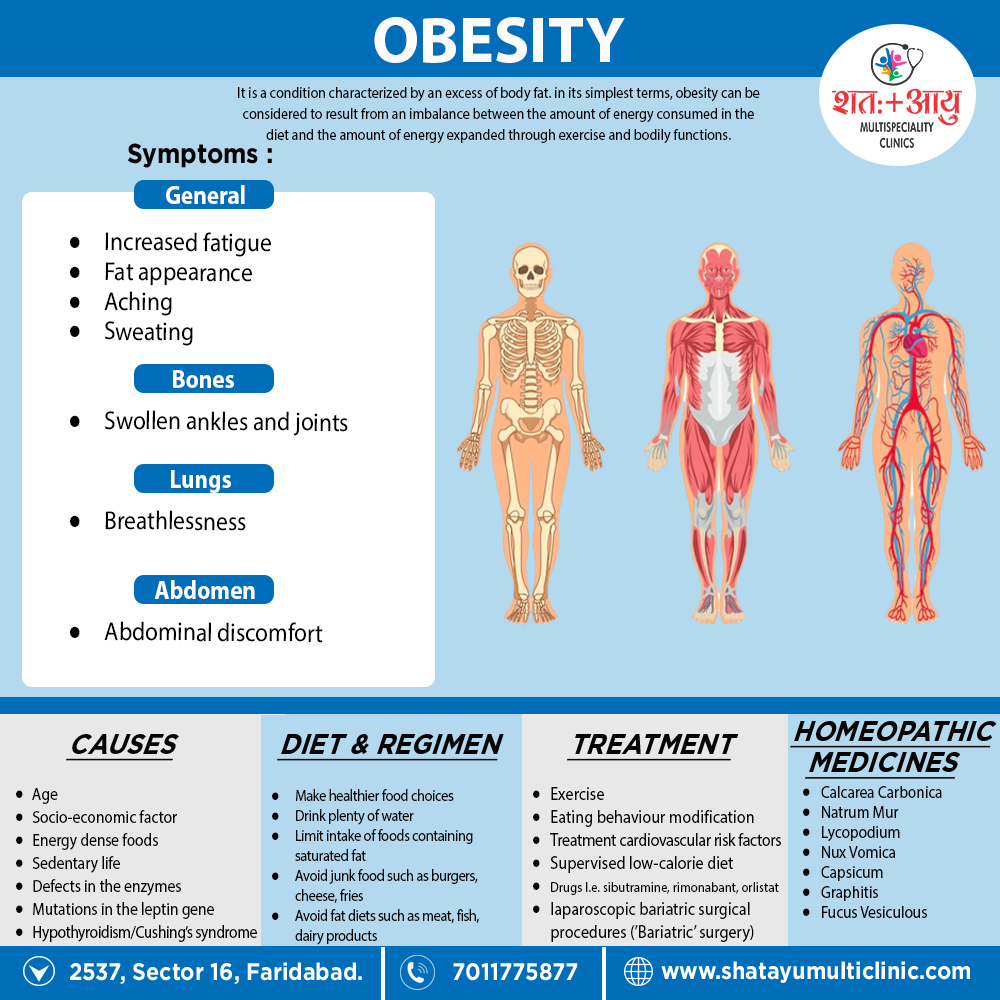Calcarea Carbonica:
This medicine is mainly given when there is excess fat in the abdomen and the metabolism is working at a very low pace, resulting in obesity and weight gain. A patient requiring this medicine is fatty and flabby. In order to be eligible to use this medicine to lose weight, the constitutional symptoms shown by the patient are given utmost importance. The eating habits include craving for boiled eggs, and strange things like chalk, clay, pencils, lime etc. Due to a sluggish metabolic activity, the patients are almost always constipated. This medicine can also be considered if the excess weight gain is due to thyroid problems.
Natrum Mur:
This medicine is recommended when there is an excess of fat mainly in the thighs and buttocks as compared to other parts of the body. This medicine gives wonderful results if the person has gained excess weight due to long continued stress or depression. The patients who require this medicine usually suffer from anaemia. Another important symptom seen in patients suited to this medicine is the craving for extra salts in diet. A person eligible for this medicine comes across as a person with weeping tendencies, especially when alone, worsens when someone consoles him / her and reserved nature.
Lycopodium
The patients who require Lycopodium are chronic sufferers of gastric troubles like flatulence and constipation. Lycopodium have a tendency to crave for sweet foods. They also indulge in hot drinks and hot food. They show a tendency to eat far beyond their capacity with resulting bloated abdomen and weight gain. Mentally, the person requiring this medicine very irritable and easily rouse to anger, especially on being contradicted.
Nux Vomica:
Homeopathic medicine Nux Vomica recommend for persons who have gained excess weight due to sedentary habits. The first important symptom in persons requiring this medicine is that they are chronic sufferers of the most obstinate constipation. most important symptom is the eating habit – a person in need of Nux Vomica homeopathic medicine for losing weight likes spicy food, fatty food and stimulants like coffee or alcoholic drinks. Mentally, the person is extremely sensitive to external impressions and gets angry to an extreme degree too.
Antimonium Crudum:
This mainly a homeopathic medicine prescribe for heavier person in order to help them lose weight. A suitable candidate for this medicine is a child who possesses extreme irritability, very cross nature, and an aversion to touch or look at. These children also have a marked aversion to cold bathing. The significant indicator for using this medicine to lose weight is a craving for acidic things like pickles in the child. The child’s tongue in this case is usually thickly white coated and the stomach is deranged with alternate diarrhoea and constipation due to a habit of overeating.
CAPSICUM:
Lax fibre, weak; diminished vital heat. Fat, indolent, opposed to physical exertion. In detail; General uncleanliness of body. Homesickness. Worse – while eating, especially from heat, On the other hand Better – open air, uncovering, draughts.
GRAPHITES:
Stout, fair complexion with tendency to skin affections and constipation, fat, chilly also costive. Additionally, Tendency to obesity. Aversion specifically to meat. Sweets nauseate. Besides this; Hot drinks disagree. Burning in stomach causing hunger. Worse – warmth, especially at night, during and after menstruation, whereas Better – dark, from wrapping up.
THYROIDINUM:
Thyroid exercise a general regulating influence over the mechanism of the organs of nutrition, growth also development. In detail; Thyroid weakness causes decided craving for large amounts of sweets. Excessive obesity. Best with pale patients. Weak; tachycardia; Palpitation especially from least exertion.
FUCUS VESICULOSUS:
“For obesity also non – toxic goitre.” Digestion is furthered and flatulence is diminished. In addition; Obstinate constipation; forehead feels as if compressed by iron ring. All in all; Thyroid enlargement in heavier person.

